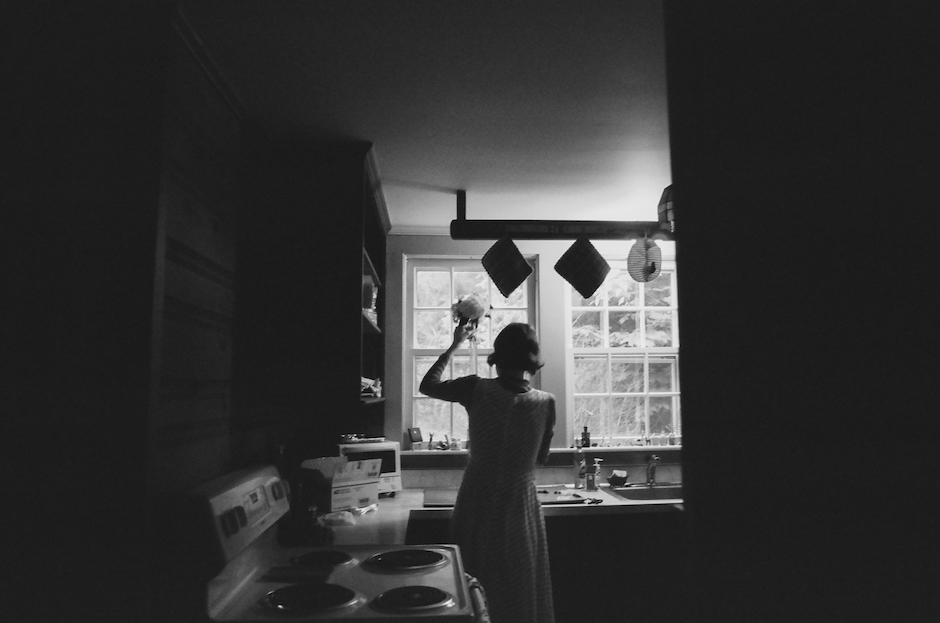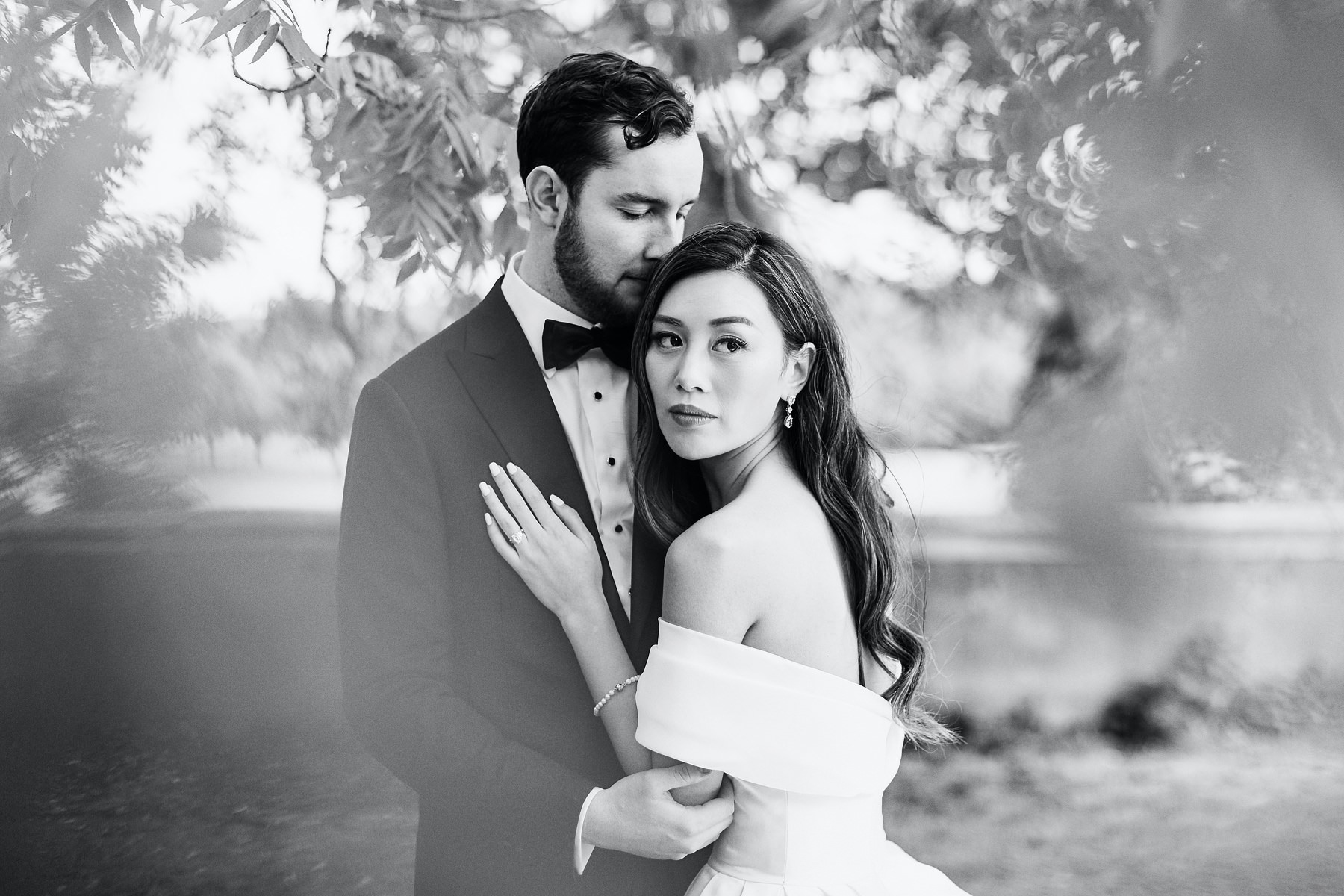RF Wedding of the Week: JeZa's Pre-Wedding Shoot Kicks off the Chinese New Year
January 29, 2014
To celebrate the Chinese New Year, which starts on January 31 this year, wedding duo JeZa photography (based out of San Francisco and comprised of Zabrina Deng and her husband Jeremy Chan), wanted to create a vintage Chinese wedding theme for the pre-wedding shoot of couple Joao Ventura and Batata Zhu.
“We found this awesome vintage old town, Sha-Wan, in Southern China, in the city of Panyu, and did most of the shooting within a temple,” says Deng, who shot this session with the Sony A7.
I asked Chan and Deng, a few questions about the differences between photo coverage for Asian versus American weddings, as well as what he likes about his new camera acquisition.
Jacqueline Tobin: You call this a “pre-wedding shoot.” Is that the same as an engagement session?
Zabrina Deng: In the Asian wedding industry, a pre-wedding session is similar to an engagement session, however, the work, time and preparation behind the session is a lot more elaborate than a typical American engagement shoot. Pre-wedding sessions in Asia typically involve an entire day of shooting, traveling to multiple different locations for the shoot, hair and makeup, and sometimes wardrobe changes provided for the client from the studio. Asian clients also love to travel to exotic locations for these types of shoots, and often the shoots result in products such as large canvas photo panels, gallery framed pictures or albums, and sometimes even billboard-sized backdrops to be printed and displayed on the couple’s wedding day.
JT: Do you get a lot of requests for pre-wedding or engagement shoots? In China how does wedding coverage differ from here in America?
ZD: About 70 percent of our business comes from pre-wedding and engagement photography. Most of our clients are Asian and wedding coverage for them focuses heavily on formal family portraiture. A typical Asian wedding day is about 12 hours of active photographic coverage because of all the rituals involved that we need to capture. In China, for example, the day starts off with the groom coming to the bride’s parents’ house to deliver the bride from her parents’ house to his own parents’ house. During this process, the groom typically has to gone through many silly games and challenges which represent his bravery and ability to do anything to impress the bride’s family—doing 100 push ups, eating wasabi and handing out red envelopes with money (representing that the groom will be able to handle bringing home money as well as taking up difficulties for the family).
 After the groom overcomes these challenges, a tea ceremony is performed at both the bride’s and the groom’s house. Serving tea to the parents from the bride and groom symbolizes that the two families have become one. The parents normally will give a speech with words of wisdom and encouragement and tips on a happy marriage. After all these rituals are finished, lunch is served and then we head out to a location for the photo shoot with the wedding party. When night falls, thats when the banquet reception starts. A typical Chinese wedding will serve 20, 40 or 60 tables of guests; each table contains 10 guests. The quality of food served is viewed as probably the most important part of the evening reception. It will be discussed by friends and family for years if a wedding has bad food served.
After the groom overcomes these challenges, a tea ceremony is performed at both the bride’s and the groom’s house. Serving tea to the parents from the bride and groom symbolizes that the two families have become one. The parents normally will give a speech with words of wisdom and encouragement and tips on a happy marriage. After all these rituals are finished, lunch is served and then we head out to a location for the photo shoot with the wedding party. When night falls, thats when the banquet reception starts. A typical Chinese wedding will serve 20, 40 or 60 tables of guests; each table contains 10 guests. The quality of food served is viewed as probably the most important part of the evening reception. It will be discussed by friends and family for years if a wedding has bad food served. JT: What kind of images did Joao and Batata want? Did they desire a particular esthetic that they knew you could deliver based on your portfolio?
JT: What kind of images did Joao and Batata want? Did they desire a particular esthetic that they knew you could deliver based on your portfolio?
ZD: I think most of our Asian clientele love photography with strong visual impact. This is accomplished via composition, lighting and visual story telling, I think they especially love pictures with more dramatic detail.

 JT: What do you normally shoot with and why did you especially like the Sony A7 for this shoot?
JT: What do you normally shoot with and why did you especially like the Sony A7 for this shoot?
ZD: I normally shoot with the SONY RX1 and the SONY A99,and 24-70mm, 50mm, 85mm and 70-200mm lenses. I just got the SONY A7 and totally love it. This entire session was shot with it and its 28-70mm kit lens. Aside from A7’s compact size and weight, we love its DRO (Dynamic Range Optimization) function because you can shoot JPEG and RAW format on any wedding, engagement or pre-wedding assignment. We use the straight, out-of-the-camera JPEG images to serve as proofs for the clients to select pictures for retouching because it processes in-camera JPEG images to look less dull. And the Live-View LCD allows me to get the picture to look exactly how I see it on the screen. I no longer have to peek through the view finder and fiddle with the meter to figure out exposure, white balance and ISO. I can quickly tune the picture to my own liking using my eyes as the best judgement. It, in turn, allows me to focus on the creative part of photography, such as composition, lighting and posing the subject.
 JT:You typically achieve a certain look using Photoshop, right? How much post production did you do here, and what is the overall look you go for?
JT:You typically achieve a certain look using Photoshop, right? How much post production did you do here, and what is the overall look you go for?
Jeremy Chan: I use Photoshop for all our Pre-Wedding photos. I like to adjust each part and color of the photo separately on most of our photos. Just like how Ansel Adams did his dodge/burn technique back in the days of film and darkroom processing, I do it with colors and textures to create surreal layers in the color palette, similar to how painters create their art. In many of our clients’ opinion, our photos do look like paintings. But in terms of having a set style, I don’t. Each photo to me is unique and therefore I apply different treatments to each of them.
Click here for more Weddings of the Week. Or email Jessica to submit one of your own.






